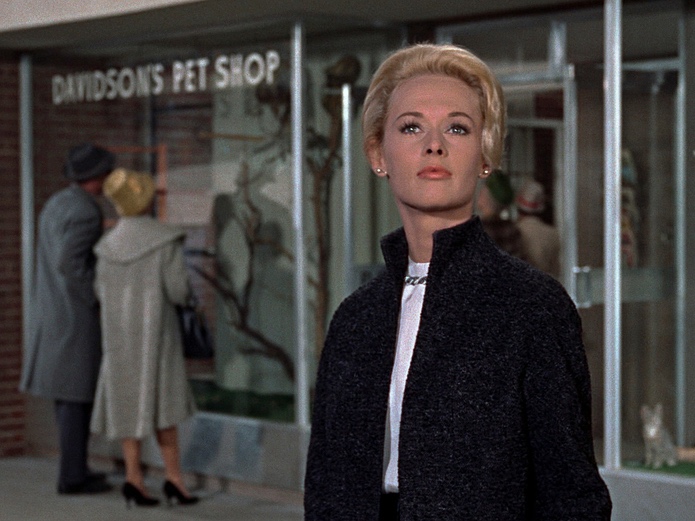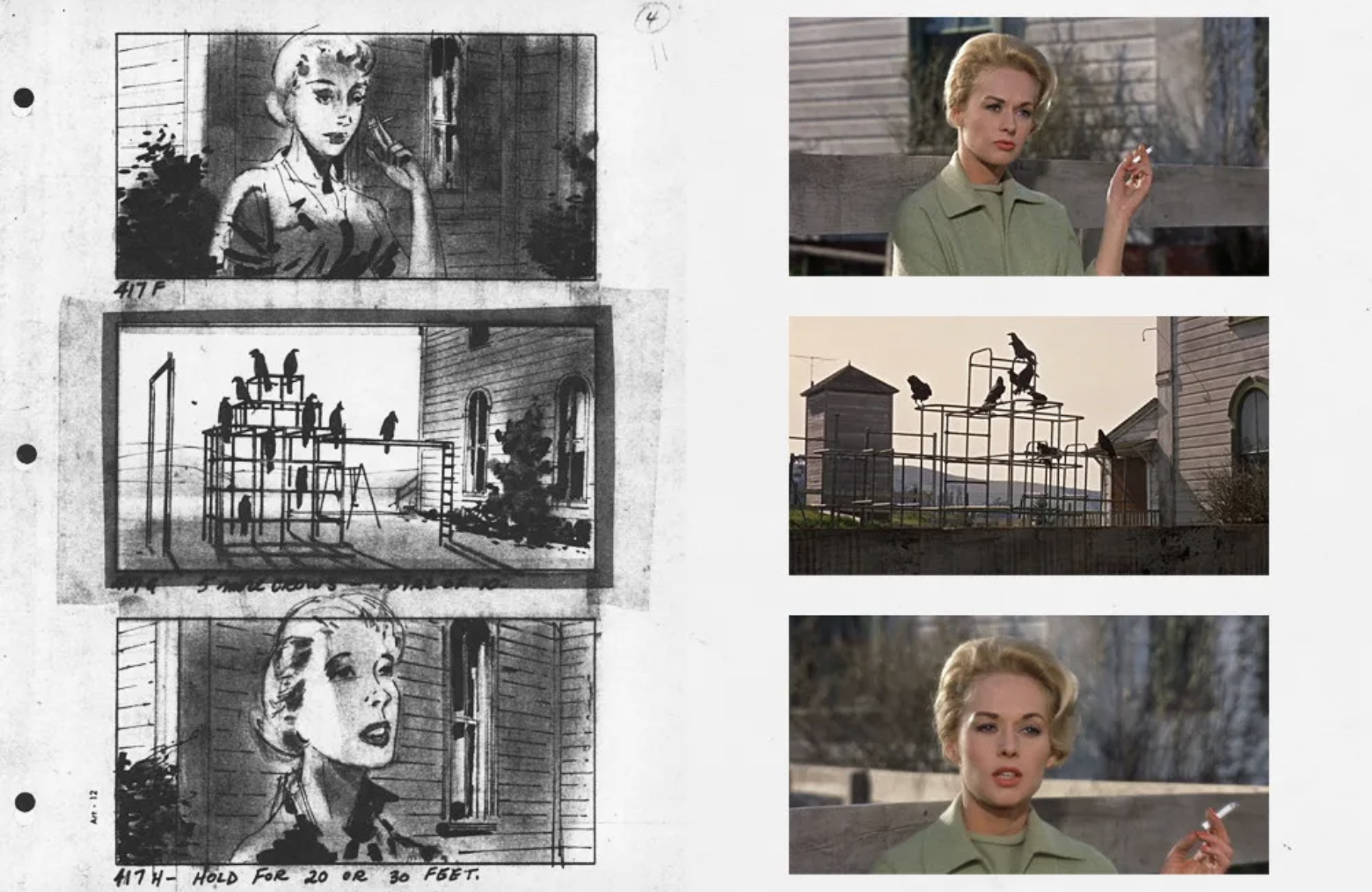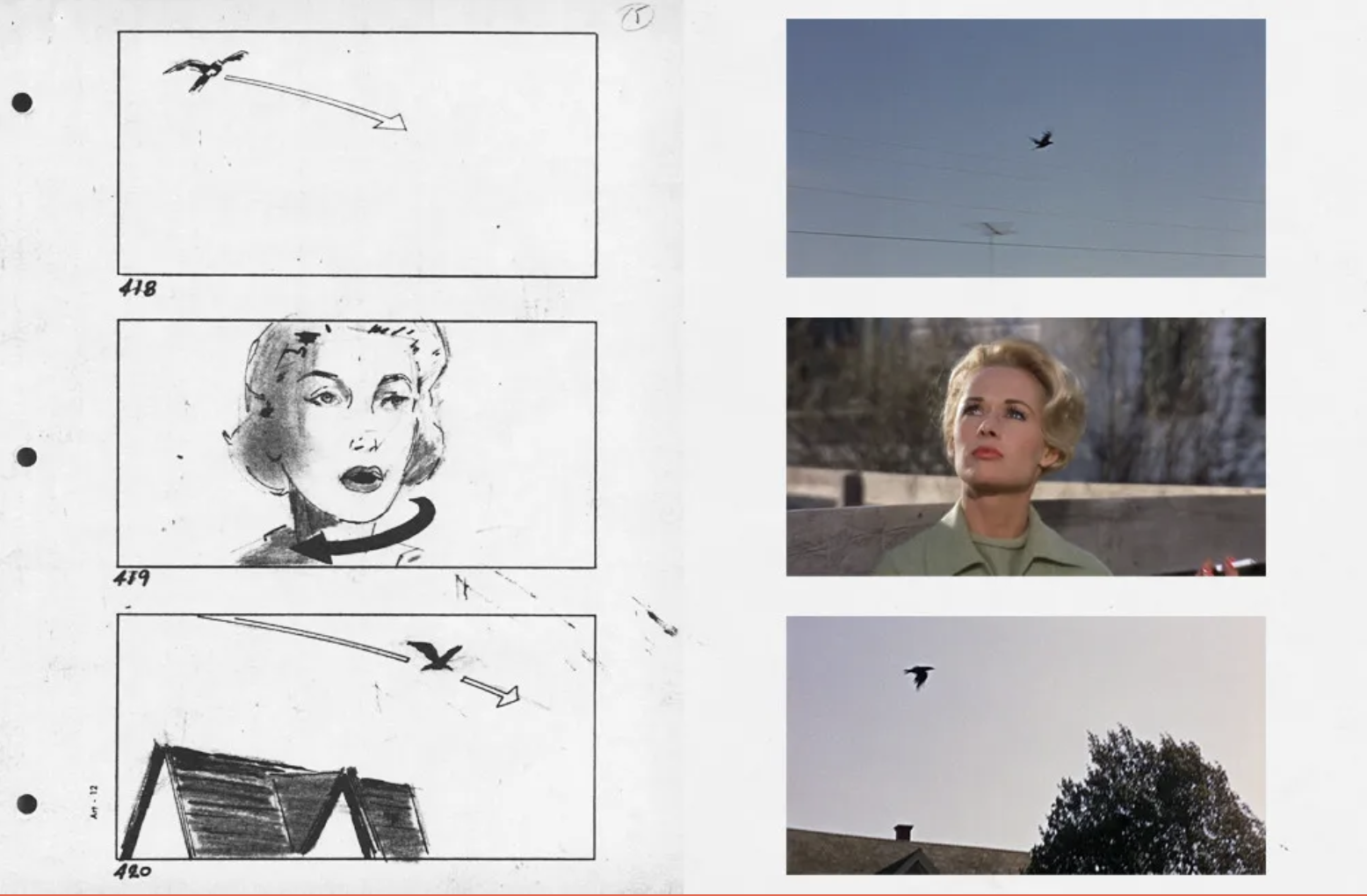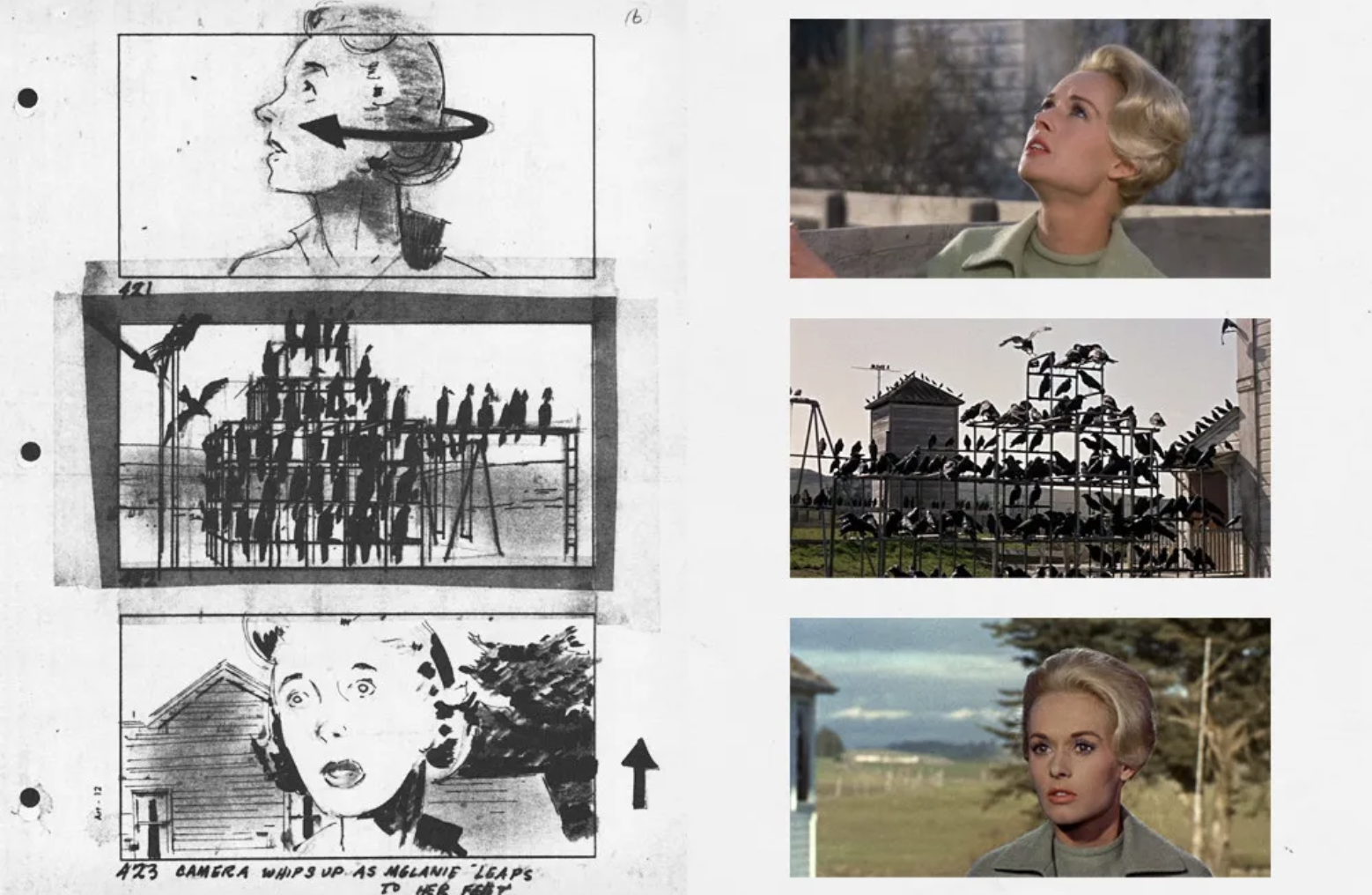
A wealthy San Francisco socialite pursues a potential boyfriend to a small Northern California town that slowly takes a turn for the bizarre when birds of all kinds suddenly begin to attack people.
EN
“Unlike other directors who would shoot a sequence different ways and decide which shot to use in the editing room, Hitchcock invariably walked on the set knowing basically what he wanted. For The Birds, every sequence that required special effects, opticals, birds or special camera moves was pre-planned and storyboarded in detail. Hitchcock and art director Robert Boyle would sit down with the script and break down each of the sequences involved. The director would verbalize how he envisioned the scene — shot for shot — and Boyle would make quick charcoal sketches, or “scribbles,” as he termed them. Hitchcock, himself an artist, would occasionally take his own piece of paper and create his own “scribbles” if Boyle wasn’t quite drawing what Hitchcock wanted. First came the “key sketch,” a detailed illustration which set the general mood of the scene, and established the lighting, time of day and color. Next came sketches for "form" and "angle," which were concerned with image size and camera placement. Boyle's roughs were then turned over to Harold Michaelson (now a major art director in his own right whose credits include Star Trek), who actually drew the final storyboards for Hitchcock's approval. Michaelson would occasionally consult Boyle on changes he felt would improve the shot and add them into the finished panels for Hitchcock's approval. Sequences were often storyboarded more than once to get the feel Hitchcock was after, but when the director was finally satisfied, the drawings became the blueprints for the film. All that remained, Hitchcock liked to say, was the technical process of transferring the storyboards to celluloid. [...] These storyboards, covering just a few seconds of screen time, show how carefully Hitchcock preplanned his film. The sequence begins with a medium shot of Melanie waiting for Cathy to come out of school, then alternates between Melanie and the crows gathering silently on the jungle gym, with the camera moving closer to her with each shot. Finally, when the audience knows the jungle gym is covered with crows, there's a long close-up of Melanie's face. “We will hold that close-up,” Hitchcock told art director Robert Boyle, “until the audience can't stand it.””
Kyle B. Counts, Steve Rubin1
“Peter Bogdanovich: How would you define pure cinema?
Alfred Hitchcock: Pure cinema is complementary pieces of film put together, like notes of music make a melody. There are two primary uses of cutting or montage in film: montage to create ideas — and montage to create violence and emotions. [...] Like the man with no eyes in The Birds - zooming the camera in - the staccato jumps are almost like catching the breath. Is it? Gasp. Gasp. Yes. Young directors always come up with the idea, "Let the camera be someone and let it move as though it's the person, and you put the guy in front of a mirror and then you see him." It's a terrible mistake. Bob Montgomery did that in Lady in the Lake -I don't believe in it myself. What are you really doing? You are keeping back from the audience who it is. What for? That's all you are doing. Why not show who it is?
[...]
Bogdanovich: How did you come to choose The Birds as a vehicle?
Hitchcock: I felt that after Psycho people would expect something to top it before going on to something else. I've noticed that in other "catastrophe" films, such as On the Beach, the personal stories were never really part of it at all. I remember a film called The Pride and the Passion, which was about pulling that huge gun. Well, they stopped every night to have a bit of personal story; then the next morning they went back to the gun again. It was terribly devised, no integration at all. They don't realize that people are still living, emoting, while pushing the gun. That was one of the things I made up my mind to avoid in The Birds. I deliberately started off with light, ordinary, inconsequential behavior. I even compromised by the nature of the opening titles, making them ominous. I wanted to use very light, simple Chinese paintings of birds - delicate little drawings. I didn't because I felt people might get impatient, having seen the advertising campaign and ask, "When are the birds coming on?" That's why I give them a sock now and again - the bird against the door, bang! birds up on the wires, the bird that bites the girl. But I felt it was vital to get to know the people, the mother especially, she's the key figure. And we must take our time, get absorbed in the atmosphere before the birds come. Once more, it is fantasy. But everything had to be as real as possible, the surroundings, the settings, the people. And the birds themselves had to be domestic birds - no vultures, no wild birds of any kind.”
Peter Bogdanovich, Alfred Hitchcock2
- 1Kyle B. Counts, Steve Rubin, “The Making of Alfred Hitchcock’s The Birds,” Cinemafantastique 10, nr.2 (1980).
- 2Peter Bogdanovich, Alfred Hitchcock, The Cinema of Alfred Hitchcock. (New York: The Museum of Modern Art Film Library, 1963).
NL
“Er gebeurde iets dat totaal nieuw voor me was: ik begon het scenario te bestuderen terwijl we bezig waren, en ik zag dat er zwakheden in zaten. De crisis die ik toen doormaakte heeft wat creativiteit betreft wel iets nieuws in mij wakker gemaakt. Ik begon te improviseren. De hele scène van de aanval op de buitenkant van het huis door vogels die je niet ziet bijvoorbeeld, deden we spontaan, terplekke op de set. Zoiets had ik nog nooit gedaan, maar ik besloot het te doen en bedacht snel goe de mensen in de kamer moesten bewegen.”
Alfred Hitchcock1
- 1François Truffaut, Alfred Hitchcock, Hitchcock/Truffaut (Amsterdam: International Theatre Bookshop, 1988), 246. Vertaald door Loes Goedbloed.




